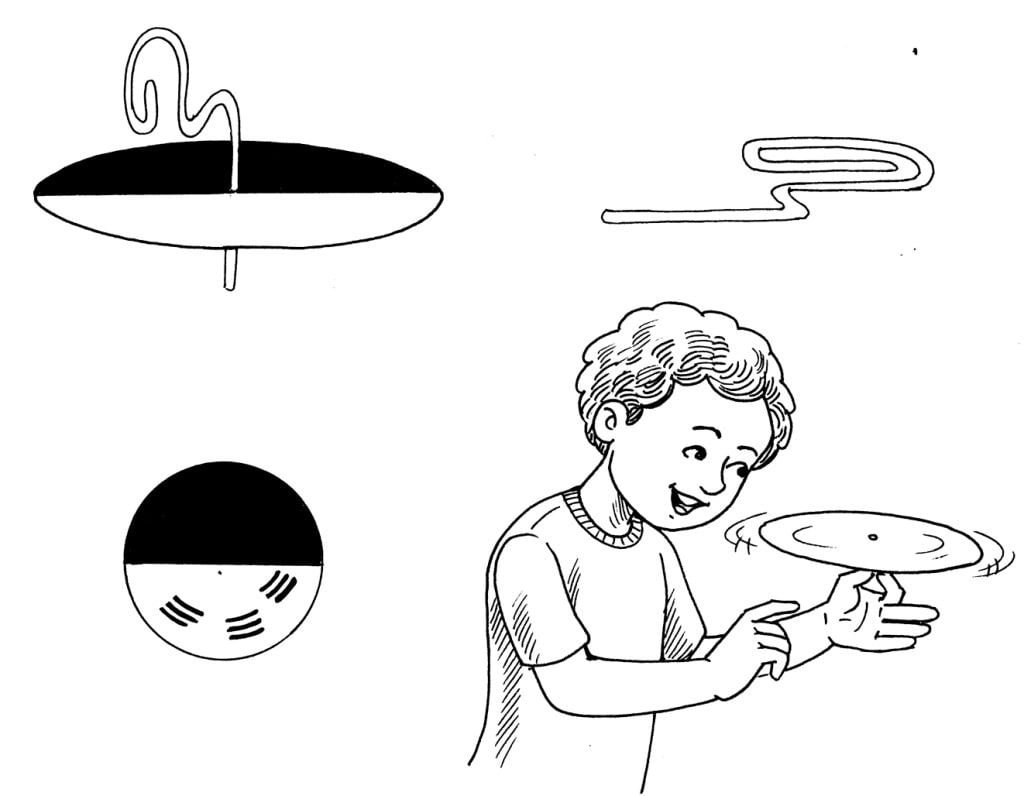
Suppose you mixed blue and yellow pigments. You’d expect to see green.
Suppose you mixed red and white pigments. You’d expect to see pink. But suppose you looked at a spinning disc that had a black-and-white pattern. What colour or shade would you expect this blur to be? Make a guess. Then be prepared for a surprise.
Things Required:
Heavy stock paper
Pair of scissors
Glue stick
Paper clip
Pushpin
Directions:
Make a photocopy of the disc on the opposite page. If possible, print out this copy on heavy stock paper. If stiff paper stock is not available, you’ll need to support the photocopy with a heavy stock backing. To make this backing, cut out the photocopied disc. Trace this disc onto a sheet of stiff paper. Cut out the stiff paper disc and use a glue stick to paste it to the backside of the photocopy.
Unbend one of the “arms” of a paper clip so that it may look like this.
Use the pushpin to punch a hole through the centre of the disc. Place the bent-up arm of the clip through this hole. The disc should rest flat and spin freely on the clip bend. Hold the disc beneath a bright light. Spin it and observe what happens to the distinct black-and-white pattern. Does this odd effect change as you vary the speed of the spin?
This Is What Happens:
Where did those colours come from? No one seems to know, for sure, although scientists have made some pretty good guesses.
This black-and-white pattern is called a Benham’s disc. It was first created over 100 years ago! When it spins at the right speed, it produces a changing pattern of light that falls upon your eye’s retina. Many scientists think that the pattern creates a nerve message that assembles the message for colour. So when this message (which should “code” for a black-and-white spin) arrives at the brain, its content is misinterpreted. Instead, your brain thinks that this message describes a colour. And so, colours where there are no colours!
